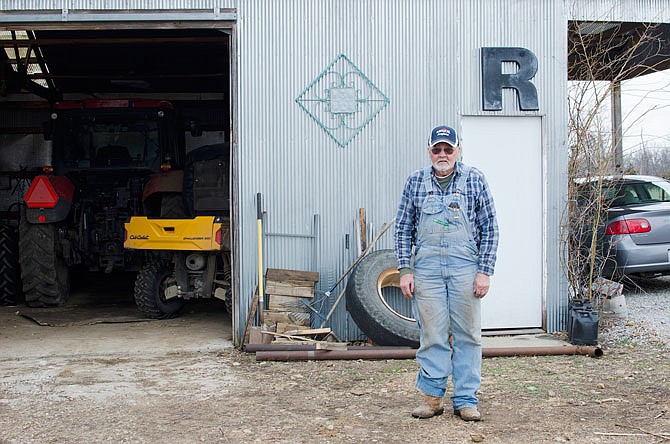Deer are a nuisance and financial problem for many farmers in Moniteau County, with herds causing damage to crops and prairies.
Marian Reed said he lost around $1,000 in soybeans last year to the herds of white-tailed deer living near and on his land. Deer also damage corn, pulling ears off of stalks by biting the silk growing from the tip.
"They're just literally taking my profit away from me," Reed said.
Cages made of wood and wire cover the flower beds in front of his home north of California, protecting sprouting tulips from the deer that for years have damaged his crops. Bullets from careless poachers have hit his home's deck and outdoor stove in the past as well, he added.
Reed said deer have been a problem since he first moved to the farm 15-20 years ago, but it has worsened in recent years. The solutions the Missouri Department of Conservation have suggested, such as repellents or fences, are temporary or too expensive to install, he added.
Robert Hemmelgarn, a media specialist with the Missouri Department of Conservation, said the state considers the deer population in Moniteau County to be about right to too few, with the number of deer stable to decreasing.
"We haven't seen any spike in conflict or crop damage issues with deer in Moniteau County," Hemmelgarn said.
Although MDC has not seen a change at the county level, individual farmers can still face issues with crop damage from deer.
"Deer density, even within a county, can really vary based on habitat and access to food on a more hyper-local level," Hemmelgarn said. "So, a lot of times, if a farmer has a neighbor who is managing for deer, who likes to go hunt, then you may have a situation where you've got more deer because of that management on your neighbor's property."
MDC estimated 20 deer per square mile as an average currently in Moniteau County.
"There will be places in the county where you can see 20 deer at once, but that is most likely at this time of year when food sources are limited and deer are concentrating from large areas at relatively scarce food sources," Kevyn Wiskirchen, MDC private lands deer biologist, said in an email. "Once green-up begins, deer will spread back out a bit more evenly.
"Deer can also occur in large groups in ag-dominated landscape during the growing season because of the high palatability of row crops and relatively little other habitat to forage from."
Moniteau County has lower deer harvest numbers than several other counties in the central region, according to information from MDC, with a total of 1,532 harvested in 2017. Callaway County, which had the highest total in the central region, saw 5,020 deer harvested.
Harvest numbers depend on multiple factors, Hemmelgarn said, such as the number of public hunting acres or hunters. They do not necessarily indicate if there is an issue with a county's deer population.
Many of the solutions the Conservation Department advises farmers to use are temporary, Hemmelgarn added, but it will give farmers permits to kill deer out of season when necessary. Two permits to kill deer out of season due to damage concerns have been issued in Moniteau County since 2011.
Reed said MDC has given him permits to kill deer out of season in the past. However, the deer return after some time has passed. He added he hopes there is an answer better than shooting multiple deer whenever they are a nuisance.
"Probably every one of those does is going to be packing little ones, and I don't like doing that," Reed said. "That's not the solution; There ought to be something else they can do to get that under control. That's just not a way of doing things. But that's what I'm going to have to do to save my crops."
William Inglish, president of the Moniteau County Farm Bureau, said the number of water sources and crops make the county a hot spot for deer. When a farmer is dealing with 30-40 deer on his property, it can significantly knock down yields.
"We have definitely kind of a pressing population into a lot of our crops and, you know, hay and pastures, as well," he added.
Inglish said he doesn't believe the damage to crops is completely the Conservation Department's issue, and hunters need to be more willing to hunt does instead of only going for the trophy buck.
However, the Conservation Department could encourage more doe control, Inglish added.
"It's kind of a double-edged sword," Inglish said. "We do have several farmers that sell guided hunts or have out-of-town friends come down and rent, lease their properties as well.
"We do want to work with those type of situations that, you know, we obviously don't want to eradicate the deer. We kind of have to find our balance between maximizing our crop and pasture farmer profits as well as giving the opportunity for those guys to have the hunting privileges as well."
Inglish said Moniteau County does not currently have that balance, with deer causing more crop damage than the value they add through hunting.

